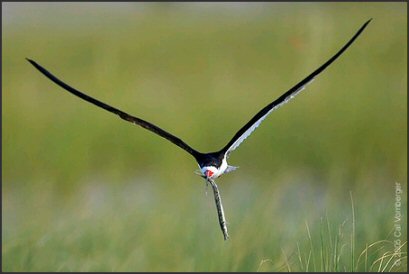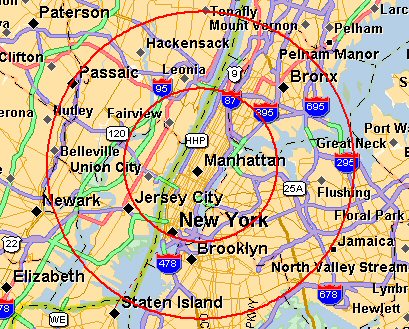
Black Skimmer Flying with Needlefish
Nickerson Beach, Long Island, United States
Image by CAL VORNBERGER
(additional Skimmer images by Cal — click images to advance)
Black Skimmers (Rynchops niger) have been visiting Central Park over the past few years feeding at night on several bodies of water including Turtle Pond, The Lake, Conservatory Water & The Meer.
They're back! All sightings have been on Turtle Pond near Belvedere Castle & The Delacorte Theatre. Bob Levy was first to report on their return this past Sunday (11-June). No more than 3 skimmers have been seen simultaneously.
The earliest on-line record, from the past few years is from the NYC Rare Bird Alert for August 6, 1999 transcribed by Gregory Kunkel. If anyone has personal observations earlier than this or a source for an an earlier date please drop me a line.
‘The Birds of North America Online’ entry for Black Skimmer (by Michael Gochfeld & Joanna Burger) mentions the following on foraging behavior:
“Foraging distance from colonies variable. On Long Island, NY, main feeding areas <= 8 km from colony”.The map below shows two circles surrounding Central Park. The inner one has a radius of 8 kilometers or 5 miles. The outer one doubles the radius to 10 miles.

Click image for a larger, more detailed view
Both circles above exclude the barrier beaches on the south shore of Long Island where Black Skimmers are known to breed.
Are there any known Black Skimmer breeding sites within the inner or outer circles? It would be good to know how the <= 8 km number was arrived at!Facts from Birds of North America:
• Strikingly dimorphic in size — males are larger than females• Relatively large pupil which constricts to a narrow vertical slit, a unique feature among birds
• Fossil History: Known from Tertiary strata of Patagonia
• Other Species:
• Indian Skimmer (Rynchops albicollis) has a white collar and an orange-yellow bill
• African Skimmer (Rynchops flavirostris) is the smallest of the three species. It has brown underwing coverts and an orange-red bill with a yellow tip.
• Both sexes have incubation patches






0 Comments:
Post a Comment